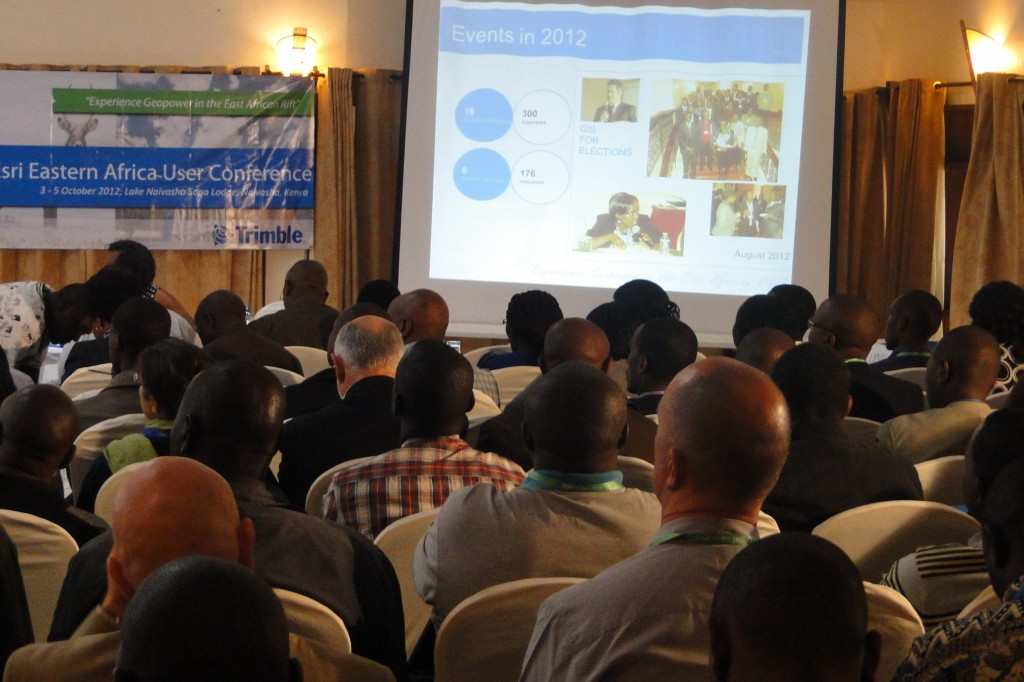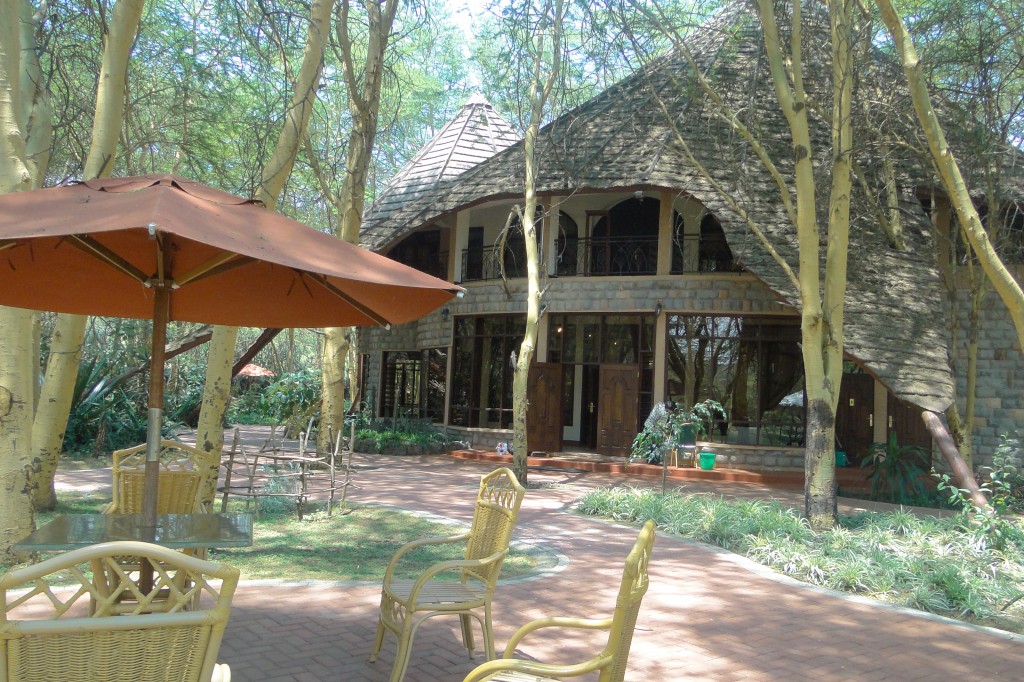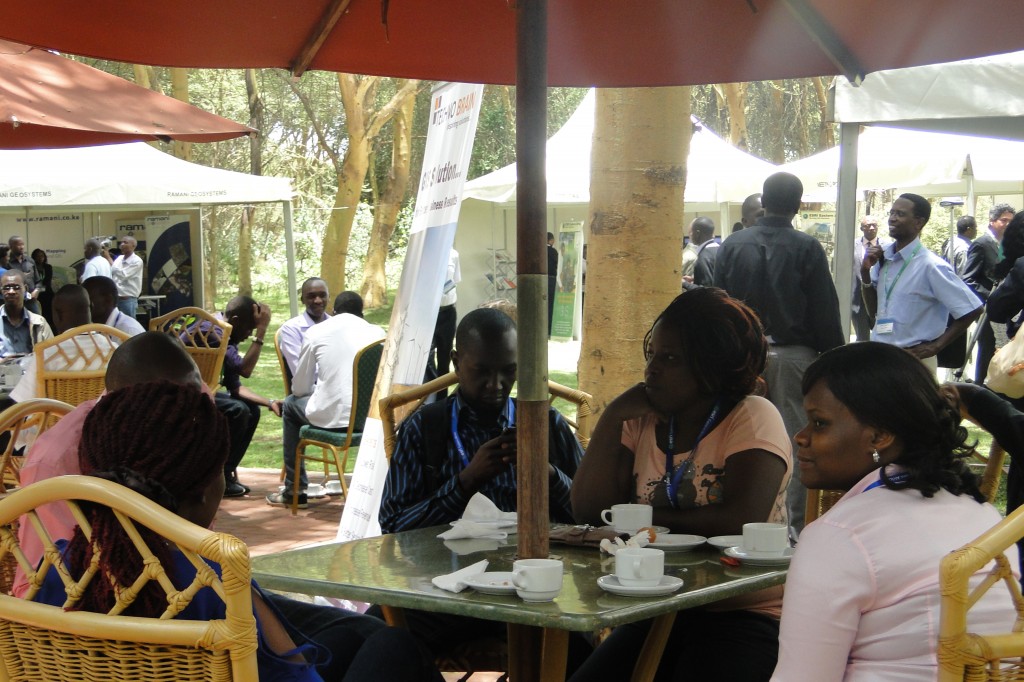Map Kibera fields all sorts of data questions from the net and in the community. We’re happy to oblige, our core mission is to openly share and distribute information about the slums, by slum dwellers, for slum dwellers. We also want to share those questions and answers and progress, to show the community of folks who really care about, create, and use this data. This is eventually going to build into thematic sections on a new website, but for the time being, this blog post.
We received two queries from Poverty Action. In context of their other evaluation work in Kenya, they are scoping a study of early childhood education in African slums.
If you have more information on any of these questions, would be great to hear about it in the comments.
What kind of education data is available for Kibera, Mathare and Mukuru?
Mappers have collected basic information on schools in all three slums, available for download in Kibera, Mathare, and Mukuru.
In Kibera, much more detailed data has been collected, on the number of staff, students, status of the facility, programs. That was collected as part of the mapping themes process in 2010, which included meeting with community stakeholders, design of survey, and data collection. Mathare was collected in 2011, and Mukuru in 2012, but in less detail.
The CSV files have the most detail. There are also print maps prepared for Kibera and Mukuru.
Have there been recent census in the slums? Is data available at the household level? Are enumeration area boundaries available?
The last comprehensive census in Kenya was conducted in 2009, and results released in 2010. This made news as the population figures for Kibera differed greatly from the media hype. We wrote about the process and politics of the census back then.
As far as we’re aware, there’s been no public census since then. There have definitely been data gathering exercises, surveys, by all kinds of actors, but unfortunately much of this data remains silo’d and unopened.
Data from the 2009 census is available at OpenDataKE, but only released aggregated to ward or constituency level. Those boundaries were not released, and were changed by the IEBC prior to last month’s election. I’ve never seen Enumberation Area boundaries released, and am not certain they are digitized. There are a few reports out there on the process, which give some explanation of the methodologies, on the Kenya National Bureau of Statistics website and in a UN Data report.

First we would like to thank ESRI East Africa for giving us the opportunity to be part of their 7th user conference. The Map Kibera Trust members present at the conference were Zachariah Muindi and Maureen Omino. This year’s theme was “Experience Geopower in the East African Rift” and the choice of the venue was great because it was just in line with the theme of the year, with it being located in the Rift Valley, on the shores of Lake Naivasha, with the Olkaria geothermal power station just a few km away, providing a good site to go for the conference safari.


The conference was just a wonderful experience that created a conducive environment for networking, sharing and learning with participants from different parts of the world, from different organizations and institutions.. The sessions were so awesome, interactive and educative. The opening session was graced by the Permanent Secretary of the Ministry of Land, who shared the changes that have taken place in the ministry thanks to GIS. Most of the maps that the ministry had were so outdated and the introduction of GIS to the ministry was a major boost to creation and publishing of new maps and constant updating of the maps. In one way the Ministry of Land affects a lot of ministries in Kenya therefore if wrong and outdated data is dished out automatically it will affect the services provided by the other ministries.
We would also like to congratulate the different organizations that scooped this year’s award at the User Conference for their outstanding job. This is clear enough that the use of the mapping has brought a huge relief to many organizations, government ministries, municipalities’ problems. The sessions at the conference were divided into two; there was the industrial sessions that focused on the applicability of ArcGIS to come up with solutions for different issues that affect human settlements, wildlife, nature e.t.c.

My colleague Maureen presented (slides here) in one of the sessions on mapping slum areas using OpenStreetMap and ArcGIS. She explained the whole work that we have been doing as a Trust starting from our Kibera pilot project, to the work that we have done in Mathare and finally on the current work that we are doing in Mukuru, and how we use GIS in creating and publishing our maps. The feedback after the presentation was just great. We also prepared and presented a paper at the conference that explained in detail the work that we have done in Kibera, Mathare and especially in Mukuru. It highlights the whole process that we undertook from the word go in Mukuru, from identifying the area, organizing community forums, to data collection and editing the data and the creation and publishing of the final maps.
There was also a presentation on crime mapping and analysis using a web based portal by Simon Ngegi Njuguna, where he shared how technology can be introduced to the police department to curb the rising issues of insecurity. Web based platforms can engage the public to report any incidence of insecurity, and once the report is sent to the police it can be analyzed and be published to the public as a warning, be used to communicate with the police on the ground about the exact location of the incidence and the easiest and fastest way they can reach there. And I do believe if this is implemented it would be a milestone to the police department that would help them serve the public efficiently and protect them. More details check out the presentation.
From the conference we learnt that there are other ArcGIS services that we can in cooperate in the work that we doing as Map Kibera, apart from the one that we have been using to create maps. We can also work with ESRI East Africa and see how they can help us bring in the new system where we saw with the use of a simple smartphone you can collect data from the field, send it to someone who is in the office, and he can analyze the data prepare a map using the data and publish to the public and other key stakeholders that are associated with information. We think this could be helpful for us as a Trust, especially now that we are starting the project on election monitoring.
Map Kibera Trust recently facilitated a 3 day training to introduce participatory digital mapping to target staff at Plan Kenya. The participants in the workshop included programme staff and ICT staff from the Kenya Country office and regional offices around the country. Participants came from Homabay, Kisumu, Kilifi, Kwale, Tharaka, Machachos, Bondo, the Kenya Country Office and the Urban Programme (Nairobi). Their backgrounds ranged from ICT support staff, to Child Rights & Gender Advisor, to M&E Coordinator, to programme staff in 4 of Plan’s 5 focus areas (Protection and Inclusion, Health, Education and Governance).
The training was planned at the beginning of the implementation of the new Kenya country strategic plan (CSP) 2011-2015 for Plan Kenya. Building on the success of Plan Kenya’s work in Kwale on universal birth registration and also from digital mapping work with POIMapper and Map Kibera Trust, the new CSP highlights the importance of ICT in the improved efficacy of Plan’s work. Plan Kenya has chosen to place an explicit focus on participatory ICT in its work. This is in line with Plan International’s focus and leadership in ICT4D globally.
In this context, the workshop aimed to:
- Introduce participatory digital mapping theories, techniques and tools that Map Kibera Trust employs in its work
- Provide hands on experience in GPS data collection and data editing using Open Street Map
- Learn more about how Plan Kenya programmes use information and communicate
- Brainstorm ideas about how to integrate ICT into programme work
We began with an introduction to Information Communication Technology for Development (ICT4D) by exploring some questions to consider before introducing ICT into programme work. The questions were (and are) meant to stimulate discussion and encourage participants to think systematically about the integration of ICT into new and existing programmes. The questions identify the reasons why you would use ICT, assess what constraints and opportunities exist in the framework you are working in, and explore how people are communicating in order to design appropriate and sustainable systems to build upon existing channels of communication. The questions are modified from Linda Raftree’s post “7 or more questions to ask before adding ICTs,” so thanks to Linda for the inspiration!
1. Why are you considering the use of ICT?
The Plan Kenya staff identified that using ICT, particularly mobile phones and the internet, has become a desired lifestyle choice that the majority of Kenyans around the country have embraced. This was an important point that the participants wished to build upon and capture in their use of ICT in various communities. The group generally agreed that ICTs are available and can be accessed by many Kenyans. The staff also mentioned that ICTs could improve communication and be used to easily mobilize communities (for example sending one SMS to many people to attend a meeting). ICTs are flexible and can improve accuracy and consistency in information, which can then be easily stored and shared. There was also mention of improved efficiency in programme work through the collection and processing of real-time information.
2. What are the programme goals or programme framework you are working within?
Most of the participants identified the new country strategic plan for the organization as the overarching framework that Plan Kenya staff are working with. The country strategic plan identifies 5 areas of focus: Health, Livelihoods, Education, Protection & Inclusion and Governance.
3. What are your specific information and communication needs?
The information needs of Plan Kenya staff members were largely related to programme work. The needs included collecting accurate data for baseline surveys for Monitoring and Evaluation and thus to assess programme impact. There were some suggestions of improving communication through digitizing information that can more easily be shared to large numbers of people. The group suggested that this could improve accountability to other staff members, donors and to beneficiaries in communities. ICT can also improve the ability of Plan Kenya staff to analyze information and make decisions.
4. How are you already using information and communicating?
In order to integrate ICT into existing programmes within communities, it is important to know how staff members are already using information and communicating in their daily lives. The group came up with a long list of communication tools: email, internet, intranet, websites and social netoworks – namely Twitter, Facebook, Flickr, MySpace), applications (Skype, Yahoo Messenger), SMS and telephone calls, radio, and television. The group is using information during baseline data collection. Some are involved in a project that integrates SMS applications into the birth registration process in Kwale District.
5. Who are the actors involved in the particular issue you are seeking to address with ICT?
The Plan Kenya staff won’t be (and aren’t) using ICT in isolation. There are important stakeholders they work with on particular issues, programmes and projects. These include the general community – with a particular focus on youth and children. Important sub-sections of the community include teachers, school administration, Government of Kenya, civil society organizations, Plan Kenya partners (such as Childline Kenya, Community Cleaning Services), the media and private sector actors. Different groups of people use technology differently, and depending on the answer to question 1) and question 6 (below) the staff may need an ICT strategy that is diverse enough to reach the various stakeholders.
6. How do people use ICT already?
This list of the ways in which Kenyans are already using ICT is a testament to the idea that the group tapped into when answering question 1. The use of ICT in Kenya, specifically mobile phone applications, has become a lifestyle choice. Kenyans use phones for mobile money transfer, SMS, calling, accessing the internet, paying their bills, paying for goods, calling toll-free lines (e.g. Childline call centre, police hot lines) and for data collection and dissemination. Kenyans also listen to the radio, use computers, blog, email, chat, shop online, bank online, join online discussions and news groups and use various forms of social media. They do this for work, but also for pleasure. These were the means identified by the group, however this is not an exhaustive list.
7. How do people access technology already?
This was a sub-section of question 6 and the group answered: mobile phones (including GPS enabled and internet enabled phones), street phones, computer, internet connection in office and homes, internet modems, cyber cafés, radios, TVs, toll free lines, and resource centres.
8. How will you close the feedback loop and manage expectations?
How do you make sure the information you are generating, no matter the medium or tool you are using, gets back to the community? How do you promote the use of technology without seemingly presenting a silver bullet solution (even if you don’t intend to do so)?
These questions were answered in several ways. One idea about both closing the feedback loop and managing expectation was to network with other organizations and partners in the community to share information and raise awareness about the use of ICT and the opportunities and limitations of ICT4D projects.
Another option for closing the feedback loop was to both collect and disseminate information on popular social media sites such as Facebook and Twitter.
A third suggestion was to close the feedback loop and manage expectations through an informed resource person and/or resource centers and staff having sessions with the community.
Finally, there was the suggestion to start the integration of ICT in development work by outlining and communicating clear expectations and at the end have feedback sessions to monitor the whole process.
9. What is your sustainability plan?
The final question, and likely the most difficult (we only had a one hour brainstorming session and did not expect participants to come up with final answers to this question but simply consider it as an important component to any project with an ICT component).
One idea was to equip community members, and particularly youth, with skills that will be applicable beyond the program (or project) timeline. The YETAM project (youth empowerment thorough arts and media) was designed in this way and the group agreed that this design was beneficial to the young people involved in the program.
Another suggestion was to involve the beneficiaries/community in the entire process of choosing/customizing appropriate ICT tools that suit their needs and for further development so that it is community owned process and will in theory continue beyond the project/program lifecycle. Other ideas included:
- Build partnership with Government and NGOs.
- Integrate fund raising or income generating activities into the project.
- Use affordable technology (free and open source)
- Ensure follow-up mechanisms are built into the project
We discussed the use of mapping, open information and ICTs for development. We also used two of the three training days to focus on hands-on training and skills building. We facilitated training in handling the GPS devices, collecting data and using Java Open Street Map (JOSM) and Potlatch to record open spatial information into the OpenStreetMap databases. As we’ve found in the past, the hands on training is exciting and motivating. The theorietical discussions, combined with the practical field work inspired discussion and debate on ideas on how to integrate participatory digital mapping andICTs into programme work.
The following are ideas generated by the Plan Kenya staff:
- Ushahidi could be useful for referral partners mapping and identifying the hot spots of child abuse
- Use of SMS for communication with hearing and speech impaired within the community
- Using reports and sharing the same information to various media channels. E.g. PPM a in-house system that is used to track and monitor information and projects progress
- In governance as a tool for enhancing social accountability, where ICT can be used to track projects
- Digitization of data collection e.g. in sponsorship (especially photography), child abuse hotspots
- Involving children in participatory community mapping by mapping schools using walking papers
- Using blogging as a tool for youth to document governance issues in the new good governance project for the Urban Programme
- In Kilifi the team is doing a 2 year study on Open Defecation Free villages and health outcomes. They could use mapping and spatial statistics to document findings.
- Mapping and other ICT4D tools could be used to document and share participatory activities that Plan already undertakes, such as transect walks and participatory situational analyses
The training ended with a note of caution – the team recognized the potential tension between the processes that are needed for ownership of a community map (and any other ICT4D project) and the haste of development partners to use the budget and report progress to donors. In this case, many projects (ICT4D, mapping and any other project) may “leave the community behind.”
It is thus important to ask the following questions and consider the answers carefully when designing projects:
- For whom are we doing the mapping (or any project really)? And whose map is it?
- Of what use is the (spatial) information, what will it compliment?
After another successful workshop with Plan Kenya, we look forward to building on the excitement and enthusiasm generated during the training! Let’s see some of the great ideas turned into reality!
Cross posted on my blog.



